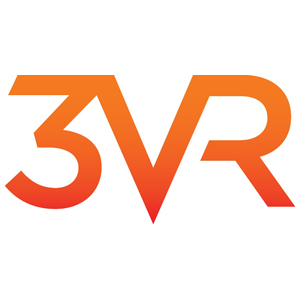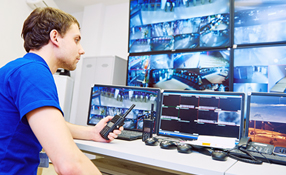3VR Security Inc. - Experts & Thought Leaders
Latest 3VR Security Inc. news & announcements
Identiv, Inc, a global provider of physical security and secure identification, has entered into a definitive agreement to acquire 3VR Security, Inc., a video technology and data analytics company. It is anticipated that this combination will provide Identiv with a full range of technologies to deliver its vision for secure, pervasive yet frictionless premises security, situational awareness and business insights. 3VR’s video intelligence solutions provide a single platform for real-time security and customer insights, enabling organisations to protect employees, customers and assets as well as improve store operations and shopping experiences. 3VR’s open, pluggable platform leverages existing customer infrastructure and allows customers to expand their systems’ capabilities seamlessly. 3VR serves customers in the financial services, retail, hospitality and other industries. Video intelligent solutions “We are advancing our global strength in the premises security industry, particularly in the attractive and fast-growing video segment,” said Jim Ousley, Chairman of Identiv’s Board of Directors. “This accretive acquisition is part of our communicated plan to grow both organically and inorganically. Overall, we believe 3VR takes us closer to achieving our long-term model and becoming an at-scale growth company.” Steven Humphreys, CEO of Identiv, stated: “Customers are looking for integrated solutions for access, video and analytics. The acquisition allows us to address this demand by including video security as part of our overall premises security and technology platform. Since access control and video management go hand-in-hand, we believe 3VR is a great fit from a technology, strategic, and financial perspective. The combined companies’ breadth of solutions across our Hirsch Access Control, 3VR video surveillance, real-time analytics, our access readers, RFID and identity cards would represent a complete solution for customers to adopt an entire physical security platform that’s extensible into real-time people and item tracking, consumer experience enhancement and business optimisation.” Security and business intelligence solutions Al Shipp, CEO of 3VR, commented: “The 3VR team is excited to be joining the Identiv team who shares our passion for innovation enabling a new level of security and business intelligence solutions. This combination offers greater scale that will accelerate that innovation, creating more value for customers which has been a core tenet of 3VR’s since our founding.” Mark Allen, General Manager, Physical Access of Identiv, said: “Our DNA has always been to build trusted relationships with our customers and partners. Our companies’ vertical expertise and anchor customer strengths reflect our shared strategy as a trusted advisor to our customers. Since the video industry has arrived at the point where everything is digital — from the camera to the screen — the focus now is on usability. The combination of Identiv and 3VR not only makes sense but when we integrate 3VR’s video technology into our Hirsch PACS platform, we anticipate creating a seamless user experience. Today, Identiv is substantially deepening the scope of the solutions and bringing these benefits to the physical world of people, places and things.” Investments towards premises segment revenue Identiv expects 3VR to add between $10 million and $11 million to the company’s premises segment revenue in fiscal year 2018. Identiv also expects 3VR to contribute a mid-term target non-GAAP adjusted EBITDA margin of approximately 10% post synergies. Identiv’s acquisition of 3VR is subject to customary closing conditions and is expected to close no later than February 20, 2018. The total consideration at close is expected to be $6.9 million, comprised of $1.6 million in cash; $2.0 million in subordinated promissory notes; and $3.3 million in shares of Identiv common stock. Additionally, in the event 3VR achieves certain significant shipment targets in 2018, Identiv would be obligated to issue additional earnout consideration in shares of Identiv common stock, and in the event that 3VR generates certain additional gross margin concerning a supply arrangement, Identiv would pay a portion of the additional margin as consideration, as further described in the definitive agreement.
3VR announces that Tony Montes joined the company as Sales Director for the eastern United States and Canada. Previously, Montes held senior security roles at top retail brands including David Yurman, Saks Fifth Avenue, and Macy’s department stores where he worked directly with loss prevention managers to define physical security standards and implement surveillance systems for stores nationwide. Previous experience “The future of the retail store is rapidly evolving with the growth of mobile shopping and digital in-store experiences,” Montes said. “As stores develop strategies to address these trends, they still have to prevent everyday losses and ensure a safe store environment for customers and employees. 3VR’s VisionPointTM VMS offers retailers a single platform that can search and analyse video content in real-time to investigate theft and understand customer behaviour as the shopping experience continues to evolve.” “Tony brings over 30 years of extensive knowledge and experience in design, implementation, and project management of physical security systems,” said Andrew Chapman, Senior Vice President of Sales at 3VR. “His first-hand knowledge of the security challenges our customers are facing will be a great asset in helping 3VR customers protect employees, secure assets, and drive better business decisions.” Montes joins 3VR from Tyco Integrated Security, a 3VR security system integrator partner, where he managed security systems upgrades for New York state agencies. At Macy’s, Montes partnered with loss prevention managers nationwide in the creation and implementation of shortage reduction programs that resulted in increased apprehension of shoplifters by 30 percent annually. Throughout his career, Montes has partnered with security vendors, law enforcement, and the Department of Homeland Security, and coordinated cross-functionally with store operations, planning, design, and construction teams to implement the highest security standards. He studied psychology at New York University.
VisionPoint VMS v8.1 empowers security system integrators to proactively and efficiently manage customer deployments in the cloud 3VR announced the newest release of its video management software, VisionPoint VMS (version 8.1), a single video management platform for real-time security and customer insights. Version 8.1 helps security system integrators manage multiple customer deployments more cost-effectively with cloud-based remote management and self-diagnostic tools. It also offers customers improved system performance and flexibility with new edge processing and enhanced 360-degree panamorph camera support. Remote configuration “VisionPoint VMS 8.1 delivers a simplified user experience and new tools to reduce operational costs via cloud-based system management, while at the same time streamlining the support process for system integrators,” said Uma Welingkar, Vice President of Product Management at 3VR. For enterprise and multi-location customers, version 8.1 makes it easier to remotely configure, deploy, and manage appliances across geographic locations via a cloud-based enterprise server, reducing customer on-site visits, and therefore improving profitability for security system integrators. System diagnostics and user-audit features By leveraging new system diagnostics and user-audit features, integrators can proactively manage and self-diagnose issues with customer deployments and receive updates regarding system usage. Additionally, dynamic process allocation enables integrators to easily manage resources on the system. For full 360-degree security coverage, VisionPoint VMS now supports 360-degree panamorph camera vendors 3VR VisionPoint VMS offers advanced search functionality to rapidly search vast amounts of video data and generate relevant clips in a matter of seconds using 3VR’s patented event cards. This release adds new edge processing that offers customers that same superior search capability with a broader set of camera options for their applications. 360-degree security coverage For full 360-degree security coverage, VisionPoint VMS now supports 360-degree panamorph camera vendors. This new release also includes tape integration for a lower cost video archive option. 3VR continues to support and update data integrations with access control and camera manufacturers. VisionPoint VMS 8.1 will be available on the partner portal using an upgrade wizard for simpler and faster upgrades.
Insights & Opinions from thought leaders at 3VR Security Inc.
It is more complicated to search through video compared to text-based data Since the launch of Google’s search engine in 1998, Internet search has grown and expanded from desktops to mobile devices, generating over 3.5 billion searches of text, images and videos per day. One likely reason for this popularity is the search engine’s ability to immediately produce relevant results based on search criteria. The security industry, in contrast, has not always taken advantage of such innovations in search. The right search technology exists to help loss prevention and fraud investigators find security video evidence of criminal activity. Yet today, most investigators are watching endless hours of video instead of leveraging specific criteria to pinpoint the moment an event of interest occurs. Why can’t security video search perform like Google? Challenges with searching relevant video footages Consider a large bank with locations around the globe and 150,000 cameras monitoring these locations. With just one hour of recorded video per day per camera, the bank is generating over 50 million hours of video per year. Yet the fraud team staff is comprised of only 10 full time reviewers. With 2000 work hours per year, this team is only capable of reviewing 20,000 hours of video per year, or just .04 percent of what is being captured. This example illustrates a common problem in security today. Most investigators conduct linear timeline searches, meaning they either watch live feeds of specific cameras or recorded video from a specific day when an event occurred. This often requires downloading the entire day’s video from a central storage server and then watching countless hours of video to find events of interest. As in the global bank example, there is simply too much video to watch for this approach to be successful. Not to mention the toll this can take on the corporate network, with bandwidth heavy video downloads interfering with critical application performance. "Businesses can leverage videodata to learn about customerbehaviour, improve operationsand enhance other importantdata sources" Although video is the fastest growing type of big data today, it is more complicated to search video compared to text-based data. Keywords and descriptions of videos must be either automated or entered manually in contrast to text-based data that inherently includes keywords. Visual data such as video is complex, with layers of information and context about how people behave and interact. Software can deliver an unbiased analysis of this behaviour whereas humans will naturally insert bias when searching and viewing video. All of these factors make it more challenging to efficiently search video footage. VMS for effective and efficient video search Today’s explosive growth in the amount of video data is driving demand for more effective and efficient video search. Recent advances in video management systems (VMS) are now making it possible to leverage surveillance video data for both loss and fraud prevention, as well customer insights, such as in-store buying habits and trends. Leading VMS solutions include the basic store and record functionality plus a plug-in framework for analytics, enterprise search and case management, all in one system. A more effective search capability allows investigators to quickly search vast volumes of video and find relevant evidence in minutes by using specific criteria such as facial surveillance, license plate recognition and object tracking analytics. Many VMS products also include context integrations that can correlate video footage with Access Control, ATM or POS transaction data. Leading businesses are now taking advantage of this same technology to analyse video data to better understand customer behaviour and operational metrics. Analytics such as people counting, dwell patterns, demographics and directional heat maps can be used to improve the customer experience, optimise staffing levels, increase conversion rates and analyse performance across locations. Forensic search capability In one example, a commercial parking firm had been relying on cameras recording the number of cars parked in their facilities to ensure this matched the tickets issued at the entry gate. Even with this video recorded, employees were still required to walk the garages every night to manually record every car by colour and license plate to accurately charge those cars that were left overnight. Once the facility switched to a newer VMS that included a more efficient search capability and license plate recognition analytic, the system was able to automatically capture all license plates that entered the garage. So if a customer loses their ticket, they can simply provide their license plate number so customer service reps can run a search and verify how long the car has been in the lot. This enables the company to accurately charge customers, preserve revenue, and save countless employee hours of walking the garages every night. A more effective search capability allows investigators to quickly search vast volumes of video and find relevant evidence in minutes This type of forensic search capability has also helped to reduce employee theft and shoplifting investigation times for a major retailer. The company had a team of five loss prevention managers working at maximum capacity to investigate activity at over 1200 stores. By implementing a more effective video search solution, they were able to reduce investigation times from one week to 20 minutes and reduce shrink by 60%. The newer VMS solutions are also so cost effective that this company achieved a return on investment in less than 10 months. Simplifying business administration via analytics In addition to improvements in security, businesses can leverage this same video data to learn about customer behaviour, improve operations and enhance other important data sources such as POS or ATM and teller transaction data. Retail stores are leveraging video analytics to more accurately measure in-store traffic, analyse associated traffic patterns (including demographics) and conversion rates to improve product placement and compare store performance across locations. Queue management analytics can help businesses improve store operations with more efficient staff planning. Merchandising management can also benefit from a better understanding of accurate conversions based upon day and time to manage inventories and product placement. For businesses that are ready to consider an upgrade to their security and surveillance system, and take advantage of these new capabilities to improve loss investigations and better understand customer behaviour, be sure to evaluate different solutions using the following VMS checklist: Handle the basics of store and record Deliver LP and BI leveraging one platform Enterprise scale and capabilities Analytics and context integration platform Advanced search architecture Multiple deployment options (hardware, software, on-premise, cloud) Easily configured and administered By choosing a VMS that meets these criteria, businesses can experience video search that parallels the Google experience.
Can a U.S. manufacturing company compete and thrive in the global security market? Megapixel camera manufacturer Arecont Vision makes a strong case that it can. Dialogue and integration with VMS companies Assembling products in the USA helps Arecont Vision ensure quality. If there is a quality issue, the company can stop the production line and fix it. Although some of Arecont Vision’s components, such as camera housings, are manufactured in low-cost regions of the world, including China, everything is assembled in Glendale, California, with additional quality checks. The “Made in USA” tag line is a statement of quality in much of the world, says Scott Schafer, Arecont Vision’s Executive Vice President of Sales, Marketing and Service. Arecont Vision is expanding its technical support, especially maintaining a regular dialogue with technical support personnel from various video management system (VMS) companies. In effect, the goal is an “on-purpose, proactive teaming in the field” to provide a joint value proposition in the security market. Arecont Vision integrates with more than 100 VMS and NVR companies, including all the big ones such as Milestone, Genetec, Exacq, Lenel, DVTEL, 3VR and many others. “It depends on what the client wants,” says Schafer. "We have come a long way in ashort period of time. Our numbersare reflecting that. We are pleasedwith the progress we have made",said Sasha Ross, Senior Managerof Arecont Vision Technical SupportDepartment Faster, stronger technical support for customers Speed of technical support is another priority, and Arecont Vision is establishing processes and metrics to achieve faster support. Arecont Vision is strengthening its support team with new people, processes and systems. The company may have the same number of online and support calls as it did in 2012, but the business volume has tripled since then. The team is better organised, and behaviours are being established to prepare for installation of a help desk software solution to track service level agreements (SLAs), escalation procedures, etc. Technical support in the Glendale office opens at 5 a.m. Pacific time and closes at 6 p.m. Pacific, handling more than 91 percent of technical support calls (there is also technical support in Europe, and a French-speaking team in Montreal.) “We have come a long way in a short period of time,” says Sasha Ross, Senior Manager, Technical Support Department. “Our numbers are reflecting that. We are pleased with the progress we have made.” Technical support calls reflect any product problems, and the nature of calls has changed as quality improvements have been put in place. In fact, many of the calls are now from integrators who are installing IP systems for the first time and need extra hand-holding. Arecont Vision technical support personnel go out of their way to avoid finger-pointing and to help customers diagnose a problem, even if the problem stems from another company’s product and is not related to the cameras. "Overall, the process we use isvery robust. Because we work withthird party software providers, partof the QA cycle is to look at howour cameras work with the top five[VMS] products [in the market]", saysDarrel Tisdale, Director of Quality atArecont Vision. Robust quality control process Arecont Vision is embracing best practices related to quality control. They have better testing facilities, are using new metrics, and have a new quality director. Quality meetings are held often. All products get full quality inspections -- two of them -- and there are no more issues with wrong labels or missing screws or other problems with the cameras. Overall quality metrics have improved, even as growth in the company’s volume has exploded in recent years. Return rates have plummeted; RMA (return merchandise authorisation) rates have dropped three- or four-fold. In addition to quality control, cameras are tested – how do they work in low light, bright light or mixed lighting? How does a camera work inside an enclosure? “Overall, the process we use is very robust,” says Darrel Tisdale, Arecont Vision’s Director of Quality. “Because we work with third party software providers, part of our QA cycle is to look at how our cameras work with the top five [VMS] products [in the market].”
Improvements in the technology have lowered – but not eliminated – concerns about false alarms False alarms have plagued the video analytics market since the beginning. Improvements in the technology have lowered – but not eliminated – concerns about false alarms. Companies providing video analytics systems say the question isn’t whether false alarms can be eliminated, but rather how they can be managed. “We’re still very far away from a day of zero false alarms,” says Zvika Ashani, chief technology officer (CTO), Agent Video Intelligence (Agent Vi). “Maybe someday when enough computing power is available and algorithms are at the level of sophistication of humans, but we’re still not there.” However, significant strides have been made in the last half dozen or so years, Ashani adds. Today when customers install the Agent Vi system and configure it, they can quickly reach a working state with mostly “true positives,” he says. In other words, false positives can be managed. The ability to achieve a workable level of false positives is “the difference between robust, high-end analytics and what you can get inside a camera at a low cost,” he adds. “People realise they can’t work with [in-camera analytics], so they come to us for a more reliable solution.” iOmniscient’s Nuisance Alarm Minimization System (NAMS) uses artificial intelligence to analyse what is or isn’t a threat – what’s a man or what’s a dog or what’s just a light changing? The system also helps to deal with the “noise” in a video image. “You never get to zero (false alarms), but if you reduce it several levels of magnitude, it’s tolerable,” says Dr. Rustom Kanga, CEO of iOmniscient. For example, if false alarms can be reduced from 20 a day to one every few days, it’s more manageable. "You never get to zero (false alarms), but if you reduce it several levels of magnitude, it’s tolerable" says Dr. Rustom Kanga, CEO of iOmniscient Kanga also contends there are times when false alarms are more tolerable because of the environment. For example, a face recognition analytic looking for shoplifters in the totally uncontrolled environment of a shopping mall might only be 70 percent accurate. However, identifying seven out of 10 in a crowd of 30,000 is better than 0 (and 3 out of 10 false positives is manageable). In markets that require perimeter protection and real-time alerting, there is still a lot of wariness about the success of video analytics, concedes Brian Lane, director of marketing, 3VR. In these markets, analytics need to be nearly 100 percent accurate for them to be useful; otherwise, security directors tire of all the false alarms and eventually turn the analytics off. In markets that require less accuracy, analytics are gaining ground, Lane says. For example, in business intelligence, analytics require less accuracy than, for example, identifying a former employee entering a building. Business intelligence relies on trends, not a single data point.
Using artificial intelligence (AI) to automate physical security systems
DownloadA modern guide to data loss prevention
Download7 proven solutions for law enforcement key control and asset management
DownloadThe truth behind 9 mobile access myths
DownloadAccess control system planning phase 2
Download
















